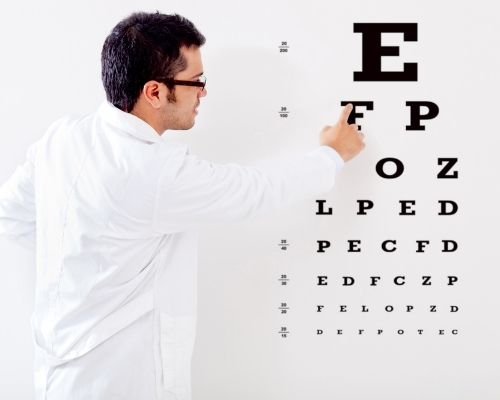
What do eye doctors mean when they use the terms “visual acuity, “eyesight” and “vision”? You might think the three terms are interchangeable, but each is used to describe a different aspect of our visual experience.
Eyesight Describes Your Ability to See
Eyesight refers to the actual physical ability to see, regardless of clarity or comprehension. Eyesight is used to describe the eye’s function as a sensory organ. This function can change significantly due to many factors, including age, eye disease, injury and health. Glasses, contact lenses, or corrective laser eye surgery are some of the procedures used to correct many of the eyesight problems that reduce visual clarity and comprehension.
Visual Acuity Measures the Clarity of Your Eyesight
Visual acuity is a term used to describe the clarity and sharpness of your eyesight. The three main physical and neurological factors used to determine your visual activity are:
- How accurately the lens and cornea of your eye focus light onto the retina
- The sensitivity of the nerves in your retina, as well as the vision centers in your brain
- The ability of your brain to interpret the visual information received from your eyes
Visual acuity is measured using the Shelian eye chart. Almost everyone’s taken this test: you place your hand over one eye and identify letters or numbers of varying font size arranged on a chart located exactly twenty feet away from where you’re standing.
Normal visual acuity is referred to as having “20/20 vision.” This means you can see from 20 feet away what you should normally be able to see from that distance.
Vision Describes What You See
Humans can smell, hear, taste and feel. However, our eyes provide us with our main source of information about the world we live in.
Having 20/20 visual acuity and healthy eyes isn’t much use if the brain can’t receive and use the information they’re providing. Vision deals with the way sensory information is transmitted from the eye to the brain and how well your brain is able to comprehend and process this information. This includes color vision, depth perception, clear focusing, and tracking moving objects.
A person with normal vision is able to accurately identify objects and conditions in their environments using the visual information being transmitted to their brains and react accordingly.
Visual acuity, eyesight, and vision describe different aspects of the experience we call sight. While they are separate terms, each is related and they all play an important role in our ability to interact with the world around us.
A Trusted Source of Vision and Eye Health for Over Sixty Years
When was the last time you had a comprehensive eye exam? Eye exams are important in measuring your visual acuity as well as the health of your eyesight and vision.
If it’s been a while since your last eye exam, now’s the perfect time to schedule an appointment at the Berkeley Eye Center. Our experienced team of eye doctors has been providing quality vision health care to patients in Houston and surrounding communities for over sixty years. We have locations all around the Houston area — call 713-526-1600 today to schedule an appointment at the Berkeley Eye Center closest to you!
